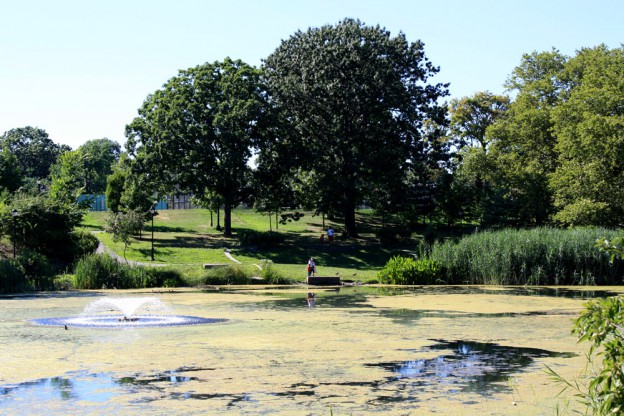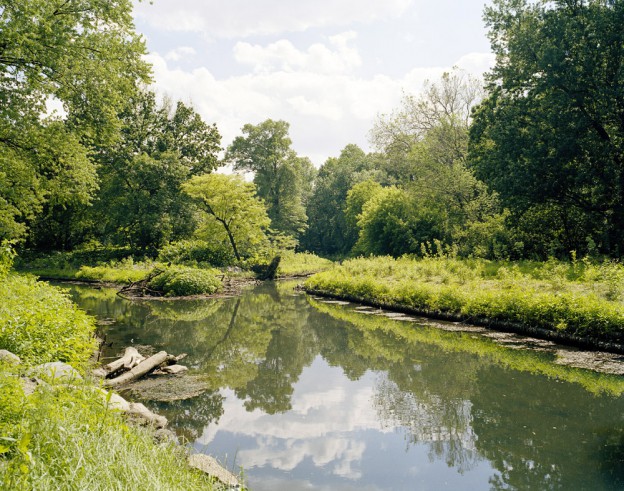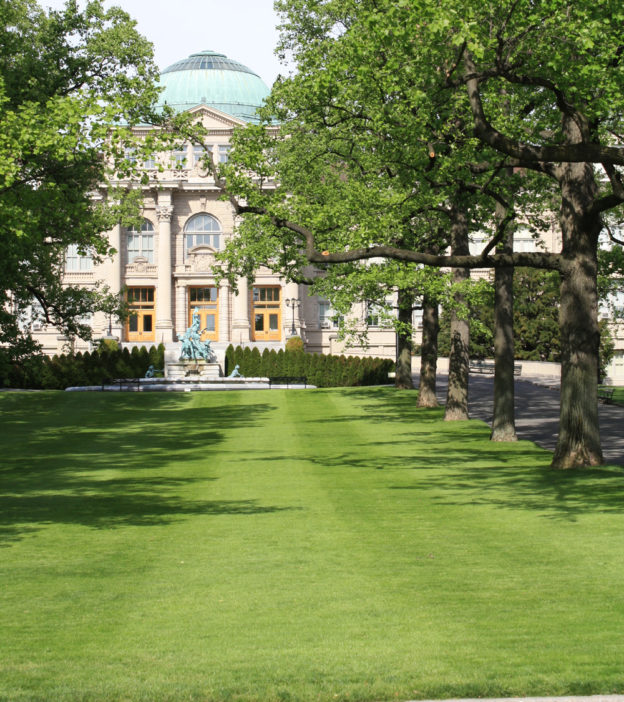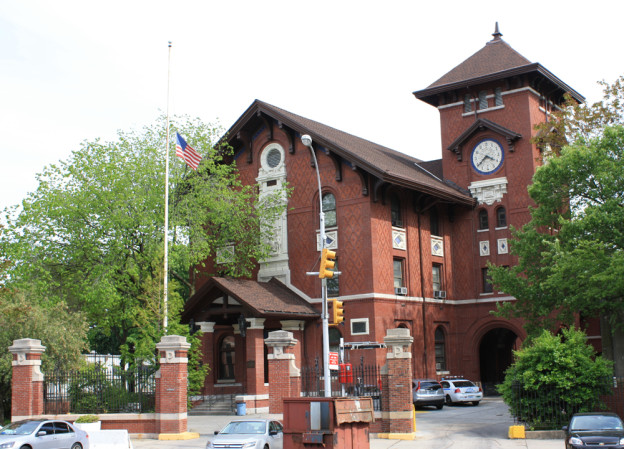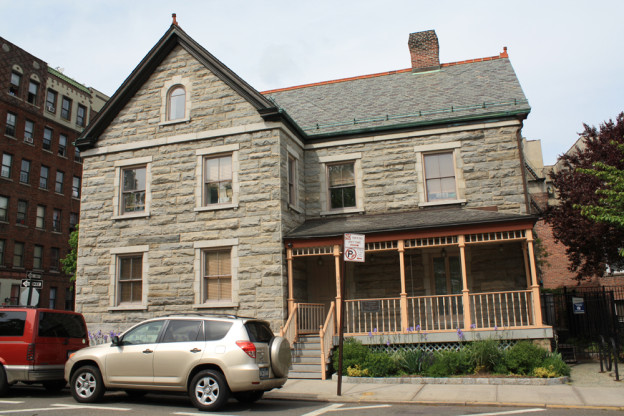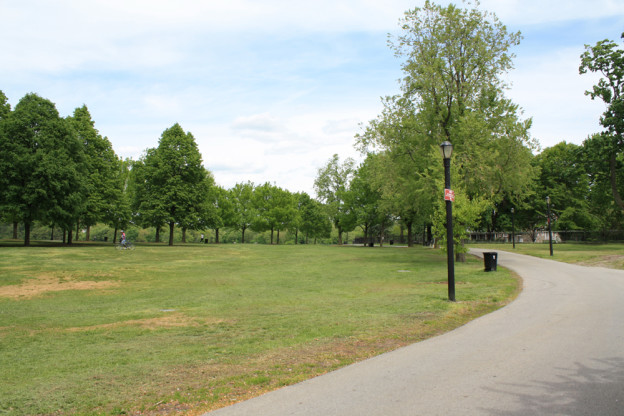When the western Bronx was annexed by New York City in 1874, it was only a matter of time until this rural area would experience widespread urban expansion and a surge in population. John Mullaly (1835–1915), regarded as the “father of the Bronx Park system,” was a newspaper reporter and editor who looked upon this future growth with concern for the well-being of city residents and for the intelligent development of the city itself. Mullaly’s effort culminated in the 1884 New Parks Act and the City’s 1888-90 purchase of 4000 acres for Claremont, Crotona, Van Cortlandt, Bronx, St. Mary’s, and Pelham Bay Parks, as well as the Mosholu, Bronx, Pelham, and Crotona Parkways that connect the parks to one another. In 1932, 18 years after his death, Mullaly Park in the south Bronx was dedicated in his honor.
To read more click here
1888;
1925|
Before European settlement, this area was covered with old-growth hardwood trees. Though the trees are only about one hundred years old, this forest recalls that magnificent historic resource. Burke Bridge is a lovely place to experience the forest and the Bronx River. Originally called “Aquehung” or “River of High Bluffs” by the Mohegan Indians, the 23-mile river originates from a small tributary stream in Westchester County and empties into the East River. In 1639, Swedish pioneer Jonas Bronck (1600-1643) purchased 500 acres from the Mohegans, including a large section of the river, which became known as “Bronck’s River.” Thus, the river, and subsequently the borough, got its name. Bronck and other settlers harnessed its energy to power mills, and three of these still exist downstream. The river was very clean before construction of the New York Central Railroad in the 1840s, which created an industrial corridor that polluted the river dramatically. The formation of Bronx Park in 1888 created a buffer in an effort to protect it. In 1925, the 15.5-mile Bronx River Parkway was completed as a pleasure drive and recreation zone, with parks stretching up to the Kensico Dam.
Established 1895;
Robert W. Gibson, 1896-1901;
Fountain of Life, Charles E. Tefft, 1903-05;
Tulip Tree Allée, Nathaniel Lord Britton, 1903-11 – NYCIL|
The New York Botanical Garden, an internationally renowned public garden and research institution, is within Bronx Park in an area previously owned by tobacco magnate Pierre Lorillard. In 1891, the City allocated 250 acres for a public botanical garden, for which the Torrey Botanical Club had advocated for some time. The Club led a private fundraising campaign for the project, and this public-private structure still exists today. Nathaniel Lord Britton and his wife Elizabeth Gertrude Britton, prominent botanists, worked with the Club on this initiative, and in 1896, Mr. Britton became the institution’s first director. The The New York Botanical Garden was made a National Historic Landmark, and listed on the State and National Register of Historic Places in 1967.
3016 Webster Avenue;
Stoughton & Stoughton;
1904-06|
When the East Bronx was annexed in 1898, its population grew rapidly and this area was in need of police protection, which led to the construction of the 52nd Police Precinct. The red brick Italian Renaissance Revival villa features a square tower with projecting eaves and blue and white terra-cotta clocks on three of its sides, protected by pitched roofs with wooden bracket supports. The Police station was designated a New York City Individual Landmark in 1974 and was added to the State and National Register of Historic Places in 1982.
1888; extended: 1935-37|
In the 1860s, Frederick Law Olmsted designed a system of roads to connect the city’s parks. These “parkways” were meant to accommodate different types of traffic and allow for optimal efficiency. Separated by pleasing landscaping, the center roadway was for private, through traffic, while parallel side roads were for local and commercial traffic. Intersections were via bridges and tunnels to avoid breaks in traffic flow. Mosholu Parkway was acquired in 1888, and originally connected Bronx and Van Cortlandt Parks. In 1935-37, its three miles were extended to link up with the Henry Hudson Parkway in the northwest (the two become the Saw Mill River Parkway to the north) and the Bronx River Parkway to the east. Mosholu is the Algonquin word for “smooth stones” and refers to Tibbett’s Brook, which runs from Yonkers through Van Cortlandt Park.
3400 Reservoir Oval;
West George Birdsall, (chief engineer, NYC Department of Public Works) ;
1889-90;
1884-89|
The Williamsbridge Reservoir was created to bring fresh water to west Bronx residents via a pipeline from lakes north of White Plains. Due to the contiguous construction of the New Croton Aqueduct, it only operated until 1919 and was handed over to the Parks Department in 1934. Of note is the Recreation Building, constructed in 1937. The cottage across the street was built for the reservoir’s supervisor. The cottage is made of rock-faced ashlar with a granite foundation and trim, and features a slate gable roof, copper gutters and an ornate porch. The house was unoccupied for many years until it was purchased in 1946 as a private residence. In 1999, the Mosholu Preservation Corporation transformed it into their headquarters. The Keeper’s House was designated a New York City Individual Landmark in 2000, and as listed on the State and National Register of Historic Places in 1999.
3266 Bainbridge Avenue;
1758|
The second oldest in The Bronx, this house was built by blacksmith and farmer, Isaac Valentine, out of native stone on the property’s 260 acres. During the Revolutionary War, it was occupied by British, Hessian and patriot troops, and was the site of several skirmishes. The house survived the conflict, but its owner fell on hard times and sold it to Isaac Varian in 1792. With growing development in the area, the property’s acreage diminished, and what remained was sold to a developer in 1904. William F. Beller purchased the house in 1905 and maintained it for 60 years. In 1965, his son, William C. Beller, donated the house to The Bronx County Historical Society, which operates it as the Museum of Bronx History. The Valentine-Varian House was designated a New York City Individual Landmark in 1966 and was added to the State and National Register of Historic Places in 1978.
1748;
William Clark Noble, 1902|
This fieldstone and brick Georgian style manor is The Bronx’s oldest house, built for Jacobus Van Cortlandt’s son, Frederick. He died before its completion, and was buried in the family burial plot on Vault Hill, north of the house. During the British occupation in 1776, Jacobus’s grandson, Augustus, serving as City Clerk, hid the municipal records in the house’s vault. George Washington used the house as a temporary headquarters before his triumphant march into Manhattan. Since 1897, it has operated as a house museum (the city’s first), with a collection of 18th and 19th-century art and furniture. The grounds include a bronze statue of Major General Josiah Porter and a window from the Rhinelander Sugar House, formerly located in Lower Manhattan. One of several warehouses where sugar and molasses imported from the Caribbean were stored before shipment to Britain’s refineries, the British used the Sugar Houses as prisons during the Revolutionary War, though it is not known whether Rhinelander was one of these. The Van Cortlandt Mansion was designated a New York City Individual Landmark in 1966 and Interior Landmark in 1975, it was added to the State and National Register of Historic Places in 1967 and was named a National Historic Landmark in 1976.
The current park is part of a large parcel acquired by the Dutch West India Company from the Wiechquaskeck tribe in 1639. It was owned by Adrian Van der Donck, New Amsterdam’s first lawyer, then purchased in 1670 by Frederick Philipse, New York’s wealthiest man. Philipse’s son-in-law, Jacobus Van Cortlandt, mayor of New York City in 1710-11 and 1719-20, purchased a part of the estate–the present park–in 1699. At that time, Tibett’s Brook was dammed to power two mills, forming the Van Cortlandt Lake, which still exists. The Van Cortlandts operated the mills and a grain plantation here. In 1778, British soldiers killed 37 patriot Stockbridge Indians in an ambush at the northeast end of the property. “Indian Field” marks their burial ground. After 140 years, the Van Cortlandts sold the property to the City in 1889. To transform it into a park, the City filled in swamps, planted trees and added recreational facilities, including the country’s first municipal golf course in 1895.
1888|
This park was also part of the expansive Morris estate until it was sold to Elliott and Anna Zborowski de Montsaulain, who named it “Claremont.” In 1859, they built a mansion and landscaped the grounds with terraced lawns descending toward Mill Brook (now Webster Avenue). When the property became part of the Bronx park system in 1888, many changes were made, including new paths, recreational facilities and the removal of orchards. The mansion briefly served as the Bronx Parks Department’s administrative headquarters, but was demolished in 1938 when the headquarters moved to a new building on Bronx River Parkway.

